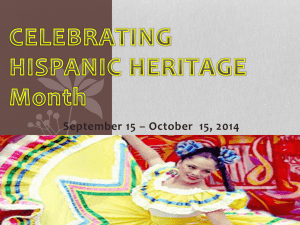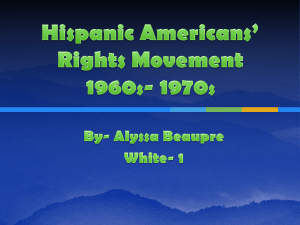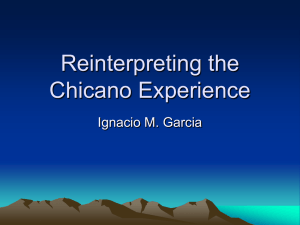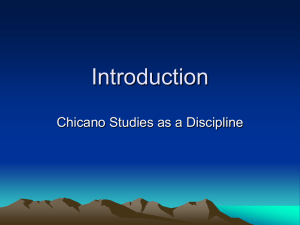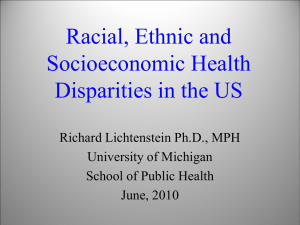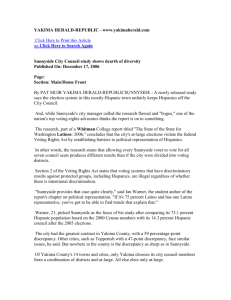chicano movement powerpoint - Hickman Mills C
advertisement
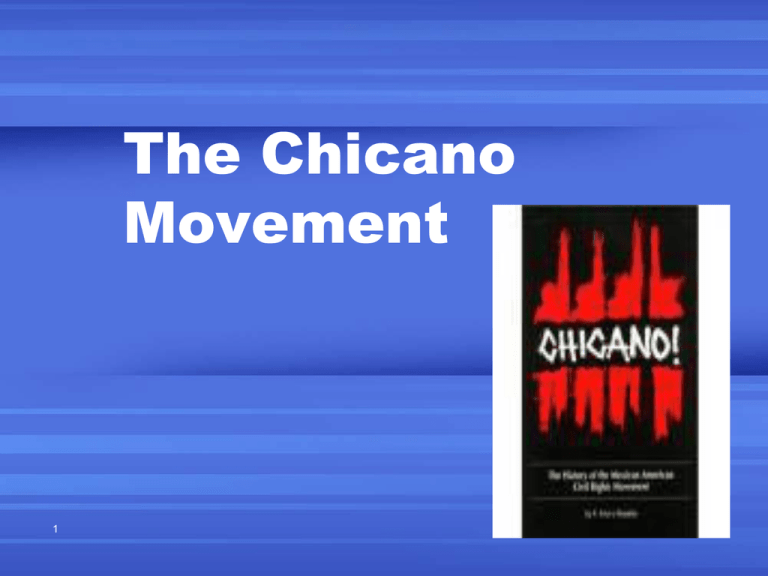
The Chicano Movement 1 Chicano • A Mexican American • A term of ethnic pride • Developed out of the Hispanic Civil Rights Movement. 2 COLD CALL… 3 Chicano Movement • Focused on 3 main Points: –Farm Workers –Educational Rights –Voting and Political Rights 4 United Farm Workers • During the 1940’s and 1950’s landowners in the West, especially California exploited their workers. • The U.S. had allowed Mexicans to work in the U.S. during WWII. However, after the war employers were suppose to give preference to U.S. citizens. 5 THINK-PAIR-SHARE… • THINK – What are 2 ways that the employers may have “exploited” the Mexican workers? • PAIR with someone close to you • SHARE what you came up with 6 United Farm Workers • Most employers continued to use Mexican workers, because they could pay them very low wages, make them work long hours without a break, and mistreat them. They were also denied the ability to become citizens. 7 United Farm Workers 8 United Farm Workers • Cesar Chavez and Dolores Huerta joined their two organizations to create the United Farm Workers. • The goal was to unionize for better wages, working conditions, benefits. 9 10 United Farm Workers • The group staged peaceful protests and boycotts. • They organized workers which forced the employers to meet their demands. • Filipinos also joined the workers. 11 12 United Farm Workers • Benefits: 13 –Specific Hours and Pay –Toilets and Water in fields –Pension after retirement –Protective gear against pesticides –Amnesty for workers brought illegally. Educational Rights • Issues in education: 14 –Hispanic students were often placed in segregated schools. –Unfair practices against Hispanic students –College and University students worked with African Americans to established rights for both. 15 The Brown Berets and Black Panthers met in the 1970’s. 16 Educational Rights • Groups such as the Brown Berets and MAYO all formed to help fight for the rights of students. • Students led Walkouts, Protests, and sit-in through out the West Coast. 17 Educational Improvements • Introduction of Bi-lingual education in public schools. • Integration of Hispanic students into White schools. • Outlawed manual labor as a punishment. 18 Educational Improvements • Introduction of Black and Hispanic History classes on College Campuses. 19 Voting and Political Rights • Hispanic Americans were often segregated and persecuted as African Americans had been. • La Raza Unida Political Party –Fought for the rights of Hispanic Americans 20 Voting and Political Rights • 1975: The Voting Rights Act of 1965 is extended to Hispanics. • University of California v. Bakke –Universities could not use Affirmative Action to limit Hispanics in Universities. 21
